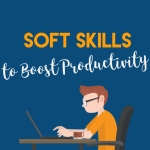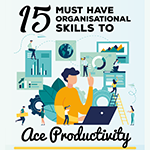98.7% Of all customers recommend us, we're so confident about our results we publish all reviews and stats
View Live Stats View Reviews
 Organisational Skills Training Course London
Organisational Skills Training Course London
Organisation Training London and UK wide
Face to face / Online public schedule & onsite training. Restaurant lunch included at STL venues.
| (175 reviews, see all 99,625 testimonials) |
From £495 List price £650
- 1 day Instructor-led workshop
- Courses never cancelled
- Restaurant lunch
Syllabus
Who is this course for?
This course is aimed at those seeking to develop and practise effective organisational techniques.
You may also wish to consider time management courses London.

Benefits
You will learn how to manage time-related issues, and gain the skills necessary to effectively plan, organise and control your own work and that of your team. Organisation training is naturally benefited when you and your team are all better organised.Course Syllabus
Self-Management
Self-assessment
Motivation and focus
Productivity
Organising information
Dealing with paper and electronic files
Managing email
Effective business communication
Creating an effective workspace
Time management
Goals, objectives and priorities
Decision making
Delegation
Working with others
Listening skills
Assertiveness in the workplace
Agreeing standards
Understanding those we work with
Taking things forward
Building a personal action plan
Prices & Dates
What you get
"What do I get on the day?"
Arguably, the most experienced and highest motivated trainers.
Face-to-face training
Training is held in our modern, comfortable, air-conditioned suites.
Lunch, breaks and timing
A hot lunch is provided at local restaurants near our venues:
- Bloomsbury
- Limehouse
Courses start at 9:30am.
Please aim to be with us for 9:15am.
Browse the sample menus and view joining information (how to get to our venues).
Refreshments
Available throughout the day:
- Hot beverages
- Clean, filtered water
- Biscuits
Online training
Regular breaks throughout the day.
Learning tools
In-course handbook
Contains unit objectives, exercises and space to write notes
24 months access to trainers
Your questions answered on our support forum.
Training formats & Services
Training Formats & Services
|
Testimonials
CSP

Jan Hague,
Insight Officer
Loved the fact that there were tips and techniques that I'd never heard of.
Organisational Skills
NNPCL

Ibrahim Tanimu,
Accountant Receivables
Keep it up!
Organisational Skills
Blackstone Consultancy

Rufus Caldecott,
Operations Analyst
The course runs at a perfect pace, with a good combination of listening work and interactive learning
Organisational Skills
See our full range of courses for professionals.
Learning & Development Resources
Soft Skills Resources
Soft Skills Blog
- Will poor organisational skills affect your profits?
- Stay motivated working from home during lockdown
- Introduction to Management - 3 Skills For New Managers
Infographics
Training manual sample
Below are some extracts from our Organisational Skills manual.
The Power of Routines
For most people, the word “routine” typically conjures up an image of a boring, repetitive life, with every moment controlled and managed, and no room for spontaneity. Routines and rituals, however, can help increase the spontaneity and fun in your life. Because routine tasks are already planned for, you have more energy to spend on the tasks that will bring you closer to your goals and bring more joy to your life.
What is Routine?
The Random House Dictionary defines a routine as, “any practice or pattern of behaviour regularly performed in a set manner.”
In fact, you can build any type of routine in three easy steps.
• IDENTIFY THE TASK. Let’s say you want to build an exercise routine.
• IDENTIFY THE TIME AND/OR TRIGGER. For example, perhaps you normally exercise right after work.
• IDENTIFY THE SUB-TASKS. For you, perhaps your routine involves going to the gym, getting changed, stretching, doing 45 minutes on the treadmill, performing three reps of weights, and doing a lap around the pool to finish things off. Then, you shower and go home.
Remember, a routine shouldn’t be set in stone. Once you establish a routine, it can be modified at any point in time, depending on what works for you. With our exercise example, you could easily decide to exercise before work or even at lunch and still use the basic task and sub-tasks.
Personal Routines
Sleep, meals, and exercise form the building blocks of our lives. Without this stable foundation, other personal productivity efforts won’t be as successful. Here are some ideas.
• SLEEP: Establish a routine for half an hour before you sleep. This might include creating a to-do list for the next day, enjoying a cup of tea, taking a warm bath, and/or performing some stretches. All these activities will help you wind down and sleep better. It is best to try to go to bed at around the same time every night, too.
• MEALS: Take a half hour each weekend to plan meals for the next week, including lunches and suppers. Then, make a grocery list and get everything you will need. Appliances like slow cookers and delayed-start ovens can also help you make sure supper is ready when you are.
• EXERCISE: Try to exercise for one hour three times a week, or half an hour each day. One easy way is to go for a brisk walk at lunch or do yoga in the morning before work.
Here are some routines that many people find helpful in maximizing their time in the office:
• Instead of checking e-mail, news, and Web sites throughout the day set aside one or several periods (for example, morning, noon, and at the end of the day). Then, batch and sequence your activities (for example, email, news, and industry journals). You can batch many types of tasks in this way for maximum efficiency.
• Set up a system for maintaining your task tracking system. This can be as simple as five minutes in the morning to update the day’s list, five minutes at noon to update what you have done already, and five minutes at day’s end to evaluate today and create a starting list for tomorrow.
• In the morning, perform your tasks in an organised, routine manner. You can also lay out your clothes and prepare your lunch the night before for maximum efficiency.
Managing Information
Organisation begins at your data entry points. Emails, voicemails, and interoffice mail are all channels that ebb and flow with information that requires processing and organisation. In this module, we are going take a moment to see how these various entry points of information can be harnessed and used efficiently.
Email
Email is one of the largest sources of information you will have to deal with daily. Email is a useful tool if handled properly. It is common practice for an administrative assistant to oversee their manager’s email inbox. This means you, as an assistant, have monitor twice as much email, and typically managers tend to have more emails than regular employees.
Although having emails make communication much easier, it does present some issues when it comes to organizing. Determining which emails are important or should be deleted places you in the position of making decisions for both you and your manager. You cannot approach your manager to ask if this email is important or not. That is why you are there. To have a technique that enables you to process emails systematically, allows for faster decision-making and organizing. Below is a quick and easy technique you should use to process emails more effectively.
The READ technique allows you to process emails in the following manner:
• Read
• Evaluate
• Act
• Delete
The Act step in the process is the most important. Here you determine the following:
• Do you reply to the sender?
• Do you relay this information to your manager?
• Do you resource this information for future reference?
• Do you reject the email and delete it?
It’s important to master the art of scheduling appointments efficiently to maximise personal productivity. Some tips to get started:
• Block off solid, quiet time to work at your desk without interruptions—no phone calls, meetings, or visitors dropping in unannounced. Make sure that people know you’re unavailable from 9 a.m. to 10 a.m., or whenever you find yourself working most productively.
• Leave the most convenient time for callers to call on your voicemail message or ask them to leave you a time that’s convenient for you to call them back. You can also use voice mail to communicate your status – at your desk all day, travelling, or on vacation.
• Meetings can be a big time-waster. Suggest start and finish times for meetings and strictly adhere to them. (Remember, after 45 minutes, most meetings lose steam.) When possible, use conference calls and web conferences to save travel time.
• If you’re leading a meeting, remember to prepare a meeting agenda in advance with copies e-mailed to everyone. Set a good example by starting and finishing on time, with important points discussed first.
Are you finding your to-do lists getting longer and longer? Give some of these ideas a whirl:
• Instead of being overwhelmed by a large project, deconstruct it into smaller, bite-sized projects.
• Delegate effectively by matching up individual strengths with project tasks.
• Be strict with deadlines, but be flexible enough to accommodate individual situations.
• Always have a backup plan!
Allow for extra time when dealing with external parties
To be the most productive that you can be, you must create the appropriate environment. This module will give you some ideas for creating an effective, ergonomic workspace in any office.
Setting Up the Physical Layout
One key aspect of an effective workspace is the physical layout. Keep these tips in mind:
Make sure your chair provides sufficient support.
If possible, position the desk so that it receives maximum natural light. Make sure that light doesn’t point at the monitor or in your face.
Keep your desk as clear as possible. Store tools and papers where they belong. Make a habit of cleaning off your desk at the end of each day.
Do a complete clean and reorganization of your workspace once or twice a year.
Place the telephone within easy reach. Keep mugs and glasses away from electronics.
Try to have an area for your computer and an empty workspace. L-shaped desks are ideal for this.
Make your workspace a pleasant place to be. Plants, pictures, unlit candles, and small fishbowls are ideal for any work area. (If you’re bringing items into an office, check company policy first.)
Focus on the changes that you can make. Keep your eyes open for new ideas.
Ergonomics
Ergonomics is the study of how workers relate to their environment. It has been proven that some factors can increase or decrease the risk of certain injuries and conditions, such as repetitive strain injuries (RSI’s), back problems, and eye problems.
Here are some things that you can adjust to make your workspace more ergonomic.
Keep your back straight.
Your feet should be flat on the floor or on a footrest.
Chair armrests, back pads, and keyboard wrist rests can help to decrease muscle strain.
Ensure your monitor is tilted at a comfortable viewing angle. (Some people prefer to place it directly on the desk, while others find that a monitor stand eases neck strain.) Use natural light when possible.
Most importantly, pay attention to your body. If you develop aches and pains, it may be a sign that your workspace needs to be adjusted. You may also need to consult your doctor for specialised treatment.
Thanks. Your download will begin shortly.
Please help us
Share or create a link to this manual today!
Just follow these simple instructions...









